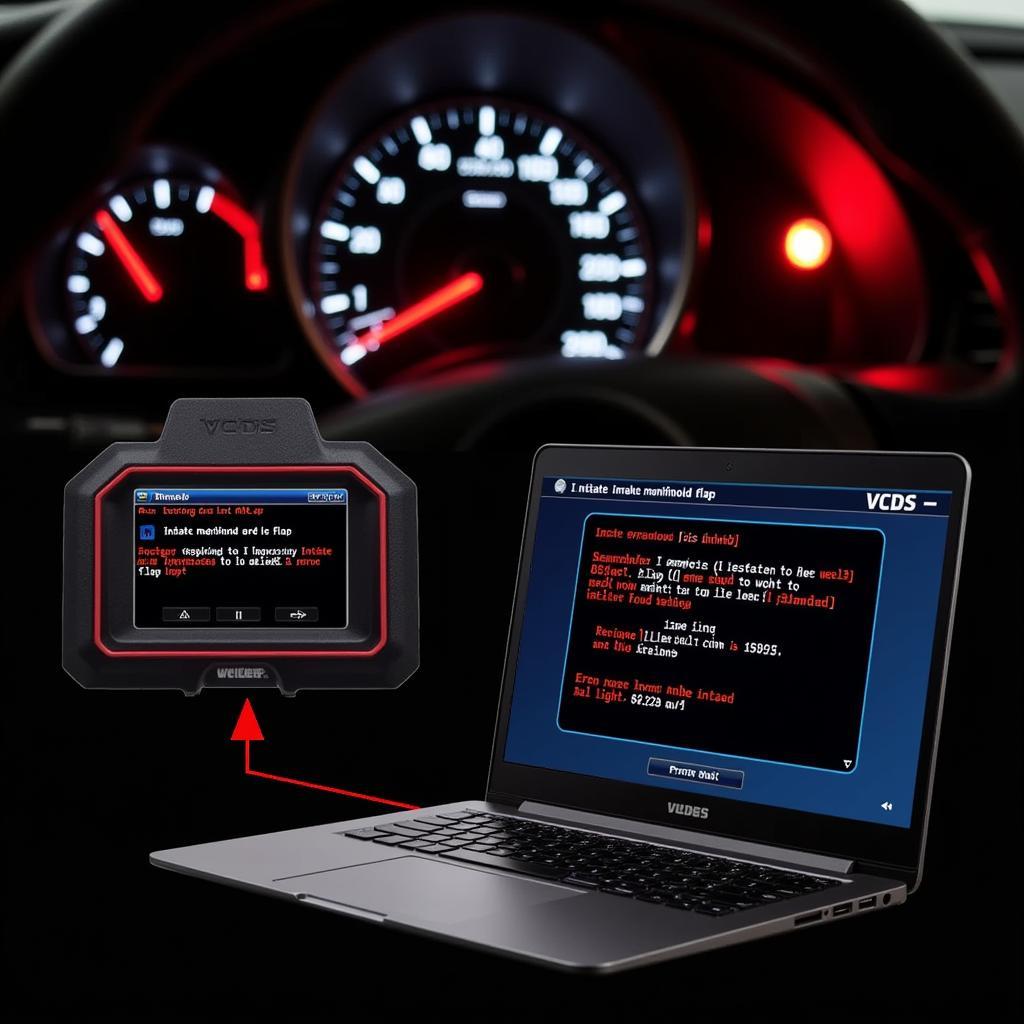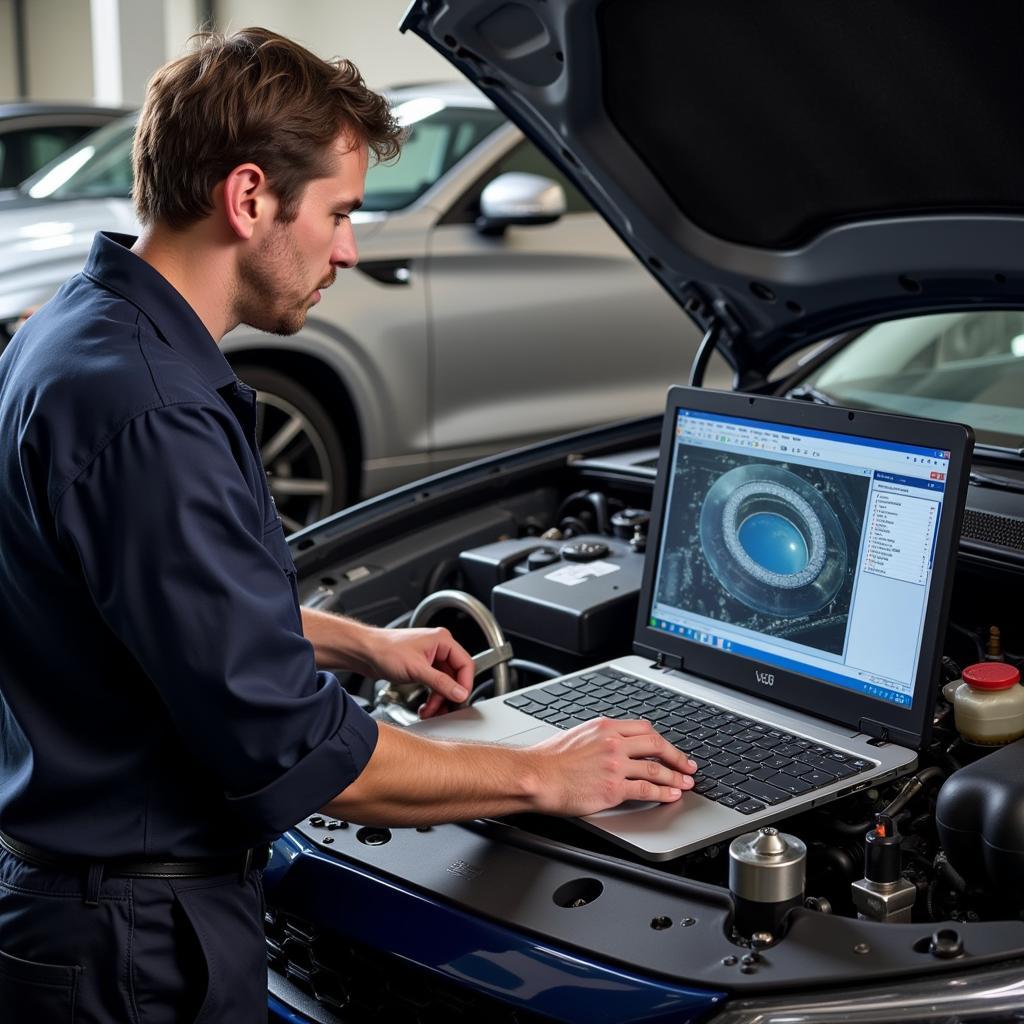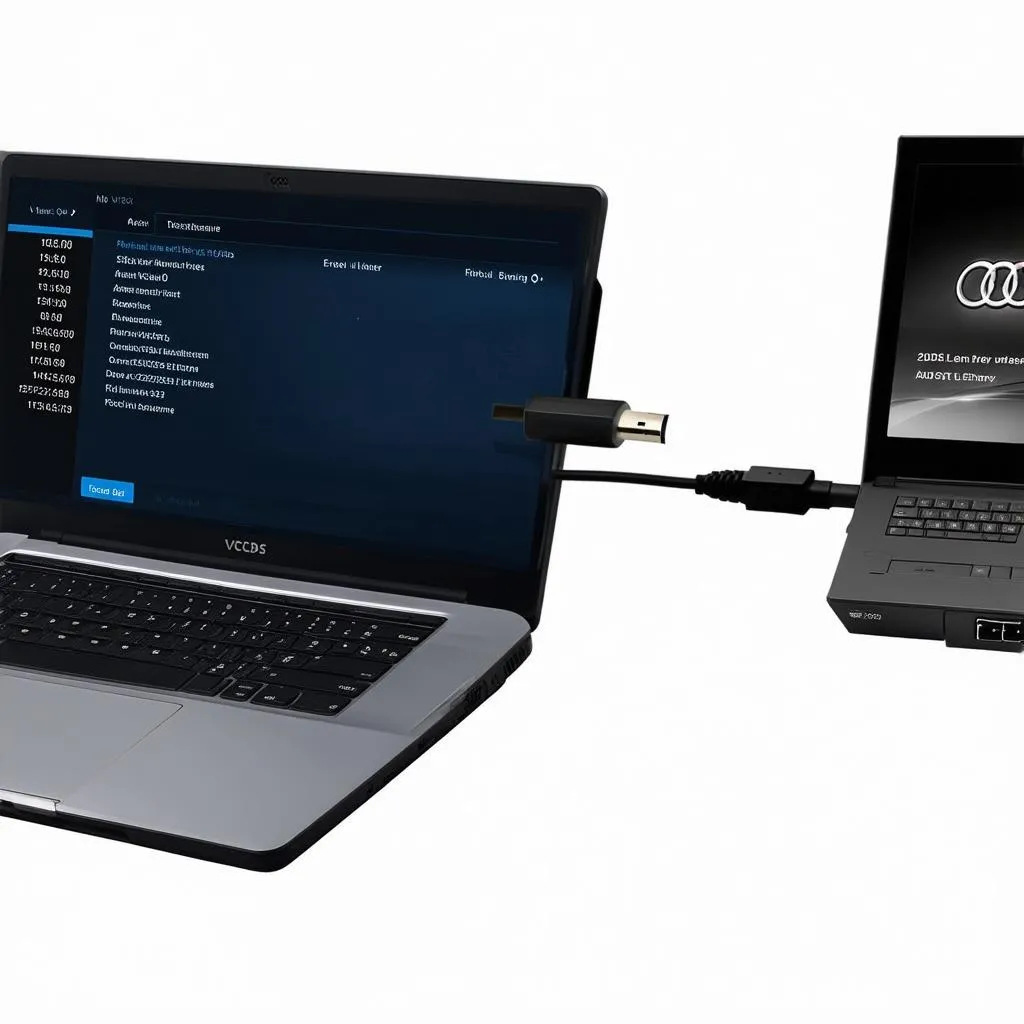VCDS intake flap adaptation is a crucial procedure for maintaining optimal engine performance in many Volkswagen, Audi, Seat, and Skoda vehicles. This process involves using the VCDS software to recalibrate the intake manifold flaps, ensuring they operate correctly and efficiently. A properly adapted intake flap system contributes to better fuel economy, smoother idling, and improved throttle response.
Understanding Intake Flap Adaptation
Intake manifold flaps play a vital role in managing airflow into the engine. At lower RPMs, the flaps close to create a swirling effect, improving combustion efficiency and torque. As the engine speed increases, the flaps open to allow maximum airflow for higher power output. Over time, carbon buildup or mechanical wear can affect the flaps’ movement and position, requiring adaptation using VCDS.
Why is VCDS Intake Flap Adaptation Necessary?
VCDS intake flap adaptation becomes necessary when the intake manifold flaps are no longer synchronized with the engine’s control unit. This can lead to various issues, including rough idling, reduced power, and increased fuel consumption. Adaptation ensures the flaps operate within their intended range, restoring proper airflow and engine performance.
Symptoms of Faulty Intake Flaps
Several symptoms can indicate a problem with your intake flaps, suggesting the need for VCDS intake flap adaptation:
- Rough idling
- Hesitation during acceleration
- Reduced fuel economy
- Check engine light illuminated
- Diagnostic trouble codes related to intake manifold flaps
 VCDS Intake Flap Adaptation Symptoms
VCDS Intake Flap Adaptation Symptoms
Performing VCDS Intake Flap Adaptation
Performing a VCDS intake flap adaptation is a relatively straightforward process for those familiar with the software. However, it’s essential to follow the correct procedure to avoid potential issues.
Step-by-Step Guide to VCDS Intake Flap Adaptation
- Connect the VCDS interface to your vehicle’s OBD-II port.
- Turn the ignition on without starting the engine.
- Launch the VCDS software and select the correct vehicle model.
- Navigate to the “Engine” control module.
- Select “Basic Settings” and then “Intake Manifold Flap Adaptation.”
- Follow the on-screen prompts provided by the VCDS software. This typically involves cycling the flaps through their full range of motion.
- Once the adaptation is complete, check for any fault codes and clear them if necessary.
Common Mistakes to Avoid
- Not following the correct procedure outlined in the VCDS software
- Attempting adaptation with a low battery voltage
- Failing to clear fault codes after the adaptation
vcds intake manifold adaptation is best performed with a fully charged battery to prevent interruptions. Just like intake manifold adaptation vcds, it’s a precise process requiring attention to detail.
When to Consult a Professional
While VCDS intake flap adaptation can be a DIY task, there are situations where consulting a professional is recommended:
- Lack of experience with VCDS software
- Persistent fault codes after adaptation
- Suspicion of mechanical issues with the intake manifold flaps
 Professional Mechanic Performing VCDS Adaptation
Professional Mechanic Performing VCDS Adaptation
Conclusion
VCDS intake flap adaptation is a valuable procedure for maintaining optimal engine performance and fuel efficiency. By understanding the process and following the correct steps, you can ensure your vehicle runs smoothly and efficiently. Remember, a properly functioning intake system is key to a healthy engine. If you’re unsure about performing the adaptation yourself, don’t hesitate to consult a qualified technician.
FAQ
- How often should I perform VCDS intake flap adaptation? It’s typically recommended after cleaning the intake manifold or if you experience symptoms of faulty intake flaps.
- Can I damage my engine by performing the adaptation incorrectly? While unlikely, it’s crucial to follow the correct procedure to avoid potential issues.
- What if the fault codes return after adaptation? This could indicate a mechanical problem with the intake flaps, requiring further diagnosis.
- Is VCDS the only software that can perform this adaptation? VCDS is the most commonly used software, but other diagnostic tools may offer similar functionality.
- How long does the adaptation process usually take? The process typically takes a few minutes to complete.
- What are the benefits of performing intake flap adaptation? Improved fuel economy, smoother idling, and better throttle response are some of the key benefits.
- Can I perform this adaptation on any car? This procedure is specific to vehicles with electronically controlled intake manifold flaps, typically found in VAG group cars.
For further assistance, contact us via Whatsapp: +1 (641) 206-8880, Email: CARDIAGTECH[email protected] or visit us at 276 Reock St, City of Orange, NJ 07050, United States. We have a 24/7 customer support team.

